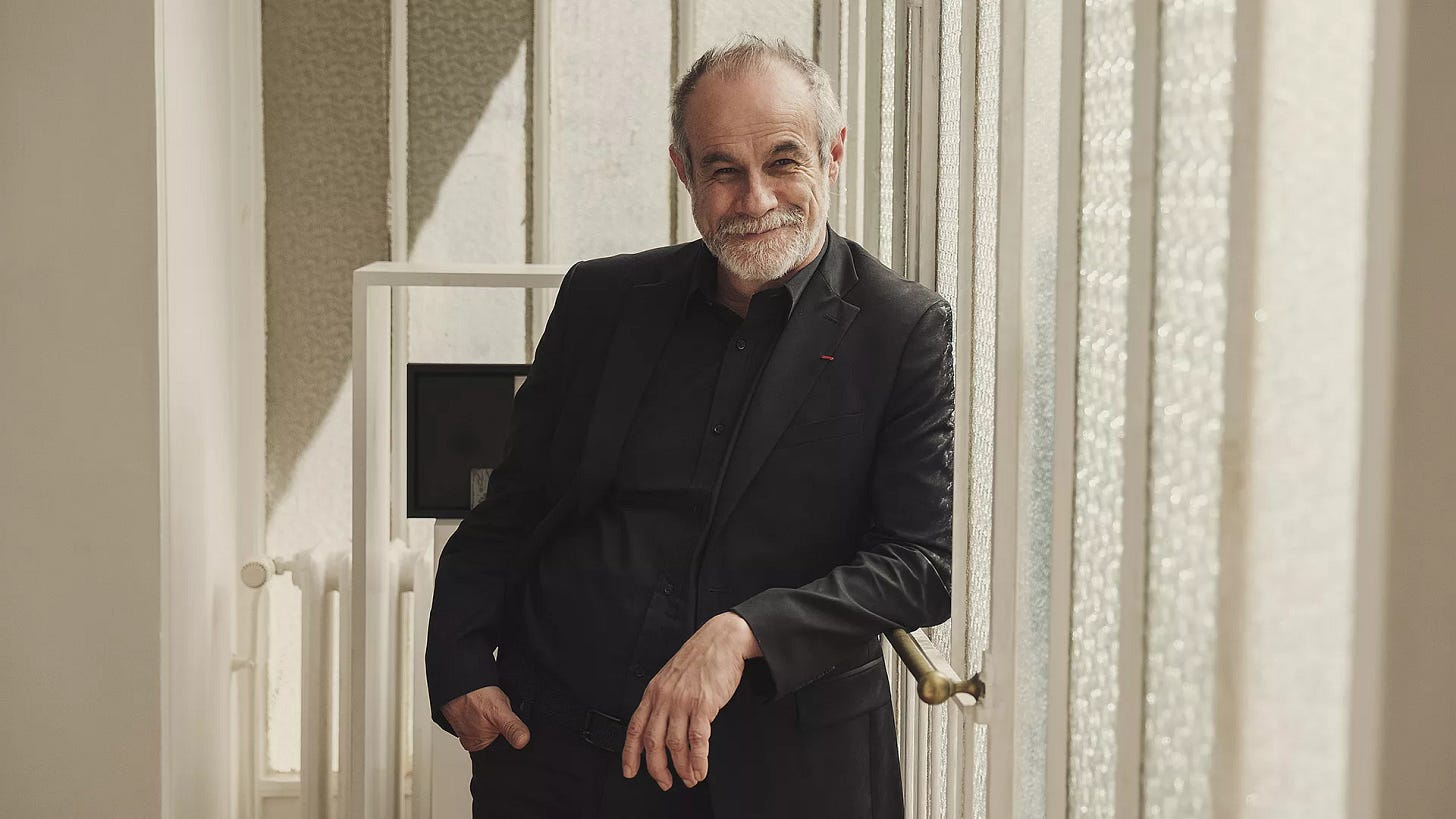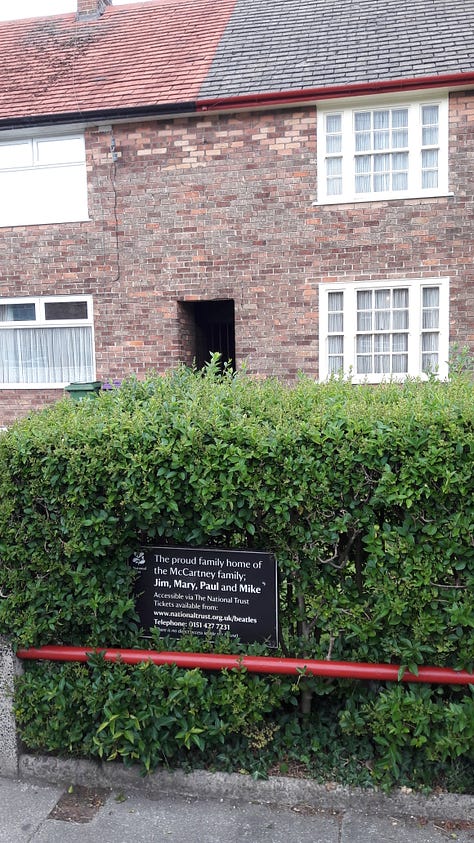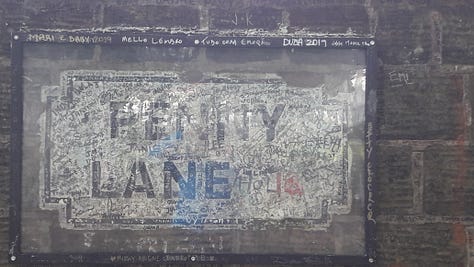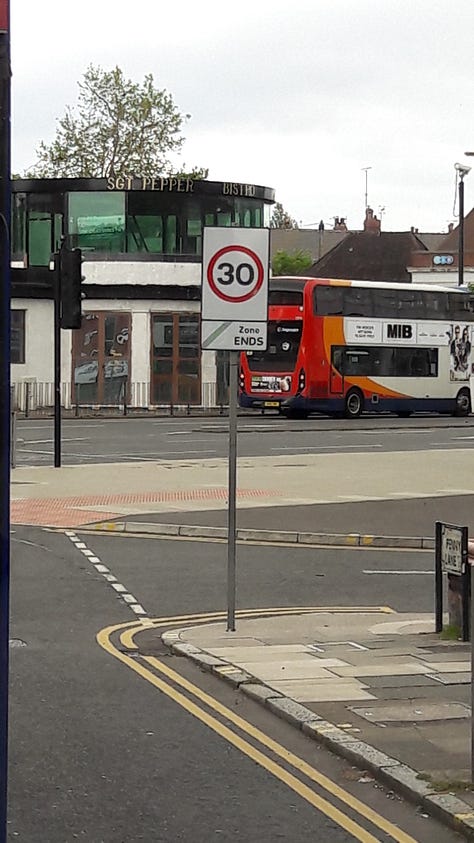Paul McCartney and Carlos Moreno: Harmonious Innovators on the Magical Mystery Urbanism Tour
Collaboration with Christian Ratering | The Beatles Series
Written by Christian Ratering (PhD) Radboud University, the Netherlands and Senior Advisor Mobility Planning Municipality of Renkum, the Netherlands.
A while back, we posed a playful question: What if The Beatles were urban planners? That led to an unexpected but compelling pairing - John Lennon and Jan Gehl - two visionaries who invite us to imagine cities where people come first. The response sparked lively conversations about the intersection of culture, personality, and planning. Some loved the idea. Others found it far-fetched, maybe even uncomfortable - exactly the point.
For many, the ideas of urban thinkers like Gehl and Moreno feel like common sense. But that’s not true for everyone. In fields like healthcare, education, or social services, these concepts may be less familiar. If we want to step outside our professional silos and foster real multidisciplinary collaboration, we need ways to reach across the divide. Ways to connect. This Magical Mystery Urbanism Tour is a humble (and joyful) attempt to do just that.
Now, the tour rolls on, with a new pairing grounded in everyday grace: Paul McCartney × Carlos Moreno.
Paul McCartney: The Melodist of Connection
As the musical heart of The Beatles, Paul McCartney has always stood for more than catchy tunes. His songs embody emotional resonance, human connection, and accessible beauty. Tracks like “Let It Be” and “Blackbird” blend simplicity with substance, inviting reflection, unity, and hope.
McCartney’s post-Beatles career reflects adaptability, generosity, and unwavering optimism. His gift lies in crafting music that is both intimate and universal - songs that touch individual hearts while transcending borders and generations. From “Let ’Em In” to “Here Today” and “Hope of Deliverance”, McCartney weaves themes of love, harmony, and belonging. Just as McCartney writes melodies that bring people closer, Carlos Moreno designs cities that connect people through proximity and shared space. His 15-Minute City reimagines urban life as a human-scaled symphony - one where people are not just near each other, but truly connected to their communities, their routines, and their sense of place. Both McCartney and Moreno invite us to belong: in a song, in a neighborhood, in a world built for care and connection.

Carlos Moreno: The Urbanist of Proximity
In urban planning, Carlos Moreno brings coherence through his concept of the 15-minute city. This visionary model seeks to redesign urban life around accessibility, connection, and wellbeing. Its premise is simple yet profound: everyone should be able to reach work, school, healthcare, groceries, green space, and culture within a 15-minute walk or bike ride from home.
This isn’t just about convenience. It’s about restoring rhythm and humanity to daily life. By reducing long commutes and dependence on cars, the 15-minute city addresses structural challenges: climate change, social isolation, urban stress; with gentle but radical logic.
Moreno’s approach also strengthens local ties through walkability, mixed-use neighborhoods, and inclusive design. It prioritizes equity: making sure everyone, regardless of income or background, has access to essential services and shared spaces.
Importantly, the 15-minute city isn’t a universal template - it’s a flexible framework, shaped by each place’s cultural, geographic, and social fabric. It invites a shift not just in infrastructure, but in how we value time, community, and wellbeing.

Shared Principles: Harmony, simplicity, depth
McCartney’s music offers a sense of emotional balance through clarity and intention. Similarly, Moreno’s city model isn’t just a plan - it’s a philosophy of human-scale living. In both, harmony plays a central role: between people and place, between present needs and future resilience.
McCartney’s melodies may sound effortless, but they’re shaped by deep intentionality. His songs carry a universal message of love and hope, wrapped in melodies that feel timeless. Likewise, Moreno’s model may seem like a neat urbanist slogan, but it’s built on layers of research, equity, and ecological sustainability.
Moreno’s vision of the 15-minute city also opens fertile ground for dialogue across fields like healthcare, education, mental wellbeing, and cultural development. Let’s imagine how these connections might take shape.
Coming up #1 Healthcare: Prevention by design…
When clinics, pharmacies, and health services are embedded in the neighborhood, care is near. This proximity is especially vital for vulnerable groups like the elderly, children, or those without access to a car. But the benefits of health in the 15-Minute City model go far beyond medical access. Clean air, safe streets, and nearby parks turn the city itself into a living system of care. Walking to an appointment, chatting with neighbors in a green square, or simply feeling safe outside - all these everyday experiences reinforce a deeper sense of security and inclusion. In this way, public health and belonging are intertwined: when people feel well, they are more present in their communities; when cities care for their people, people care for their cities.
Coming up #2 Education: Learning as a local asset
Neighborhood schools, libraries, and cultural centers act as vital anchors for community life, especially for children. In a 15‑Minute City, youngsters can stroll safely to class, forging early independence and ownership of their surroundings. Nearby libraries and museums become natural extensions of the classroom, where curiosity is sparked through casual encounters rather than scheduled field trips. Adults, too, find opportunity for lifelong learning just around the corner, whether that’s an evening lecture at the local community hall or a weekend workshop in the park. By rooting education in place as much as in curriculum, we create more equitable and less stressful learning journeys. Students benefit from shorter commutes, deeper ties to teachers and peers, and richer cultural exchange; communities grow stronger as every generation becomes both steward and beneficiary of the shared urban fabric.
Coming up #3 Mental Wellbeing: Belonging through proximity
As McCartney’s music often reminds us, small moments matter (e.g. “Penny Lane”). In a 15-minute city, daily encounters - with neighbors, shopkeepers, or baristas - build social trust and reduce loneliness. And when commutes shrink, people regain time - for family, friendships, rest, and reflection.
In the urban sense, belonging isn’t just about being somewhere; it’s about being part of something. It’s grounded in shared spaces, mutual recognition, and a sense of contribution and care. The 15-Minute City is not just about proximity; it's about proximity with purpose: creating spaces where community can flourish, where people feel safe, welcome, and connected. Belonging in the urban sense means more than housing or infrastructure, it means having a place in the rhythm of daily life. It fosters resilience, because people protect what they feel part of. It feeds learning, health, and cultural exchange, because shared spaces become shared experiences. McCartney and Moreno, each in their own field, offer blueprints for a world where people don’t just live close to one another, but where they belong together - as you can hear in McCartney’s song “Peace in the Neighbourhood”.



Coming up #4 Culture: Everyday encounters with meaning
In the 15-Minute City, culture isn’t a distant destination, it’s woven into the fabric of daily life. Local theaters, music venues, studios, and libraries bring creativity within reach, inviting spontaneous encounters with art, stories, and each other. This everyday access transforms culture from a special occasion into a shared ritual. Taking part in neighborhood culture reinforces who we are and where we belong. It’s in these small, recurring moments - watching a play in the neighbourhood, listening to music in a community center - that collective identity is shaped. Belonging grows not from grand gestures, but from the comfort of being known, seen, and welcomed in the places we inhabit.
These four examples illustrate the value of real multidisciplinary collaboration. As the Magical Mystery Urbanism Tour continues, may we find new ways to listen more deeply, collaborate more openly, and create places - through melody or design - that feel like home. When harmony leads the way, we don’t just build livable cities, we create places that are truly lovable.
Do you want to know with whom we paired George Harrison?
Stay tuned, let your guitar gently wheep; it will be right up in a couple of weeks.
This piece was written by our guest writer , PhD, for a special collaboration series with the Urban Cycling Institute.
Interested in collaborating or sponsoring a collaboration? Send us a pitch at media@urbancyclinginstitute.org
Learn more:










